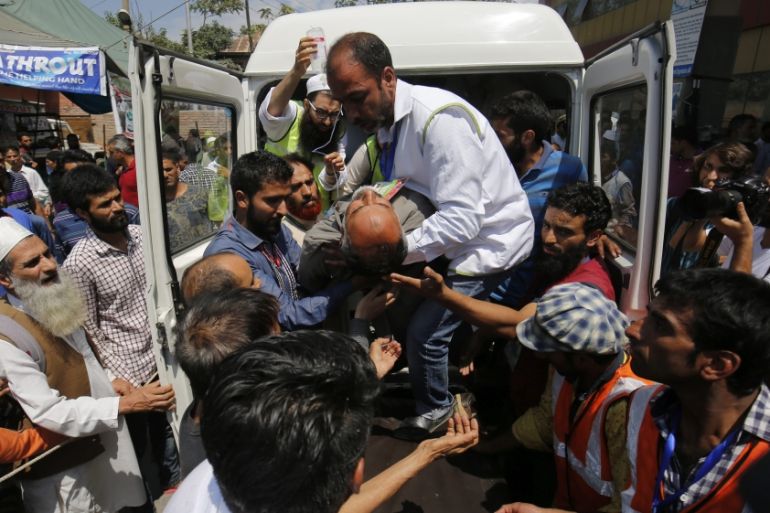Indian forces accused of blocking care for Kashmiris
Rights group alleges security forces held up emergency vehicles and harassed patients after protests turned violent.

Indian security forces have been accused of blocking medical treatment for wounded protesters in the disputed region of Kashmir by holding up ambulances and harassing hospitalised patients.
Physicians for Human Rights said not only did police and paramilitary forces use excessive force during months of unrest, they also hindered people from seeking medical attention, increasing the likelihood of permanent injuries and deaths.
“Such delays in care are violations of the long-standing protections afforded to medical workers and facilities in times of conflict and civil unrest,” said Widney Brown from the New York-headquartered advocacy group.
“What’s more, the doctors we interviewed said police were present in their hospitals, intimidating patients, and monitoring those being admitted.”
The report also said security forces harassed medical workers attempting to treat protesters and prevented doctors from reaching the hospitals where they work.
OPINION: Kashmir and the myth of indivisible India
Police in Kashmir said they would respond to the allegations once they had studied the PHR report.
|
|
| Protesters and police clash in Kashmir |
At least 80 civilians were killed and about 12,000 wounded in almost five months of confrontation between demonstrators and security forces, sparked by the killing of a leading separatist fighter in a joint army and police operation on July 8.
Kashmir is at the centre of a decades-old rivalry between India and Pakistan, which rules a northwestern section of the divided region.
An insurgency gripped the Himalayan region in the late 1980s and 1990s that Indian security forces largely crushed.
The latest unrest, sparked by the killing of Burhan Wani, a popular separatist leader, is the worst in the Muslim-majority region for six years, and critics accuse Indian security forces of heavy-handedness in quelling the protests.
Many of those killed in the clashes died from shotgun pellets or rifle rounds fired by police and paramilitary troops. Hundreds of bystanders were blinded by the pellet rounds, the report said.
While Indian authorities say the use of such weapons was meant to reduce the potential for injuries or fatalities, PHR found that their use actually caused serious wounds and death.
Police in Kashmir say pellet guns are non-lethal weapons, but they have been fired from short distances in “unavoidable circumstances” when protesters target security forces.
READ MORE: The doctors treating Kashmiris wounded by pellets
PHR’s report – based on hospital records and interviews with doctors, witnesses and victims – found police used 12-gauge shotguns loaded with metal pellets that directly caused an estimated 5,200 injuries and at least a dozen deaths.
“Injuries inflicted by ‘less than lethal’ weapons like pellets, rubber bullets, and shotguns require early medical intervention to avoid permanent or debilitating injury, including loss of life,” said the report.
“In Kashmir, delays in accessing medical care for hundreds of injured protesters increased the risk of permanent damage, including for those with eye injuries.”
In August, the Indian government said it would review the use of pellets, while a spokesperson for the Jammu and Kashmir government told Al Jazeera the weapons would be phased out.
|
|